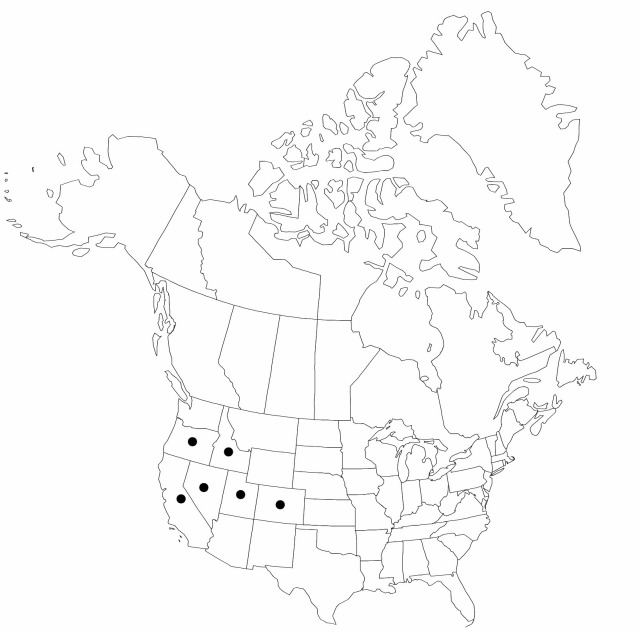Eleocharis bolanderi
Proc. Amer. Acad. Arts 7: 392. 1868.
Plants perennial, densely tufted; rhizomes caudexlike, mostly hidden by culms and roots, short, 1.5–3 mm thick, hard, cortex persistent, internodes very short, scales not evident. Culms subterete, often with to 6 prominent ridges when dry, sulcate, 10–30 cm × 0.3–0.5 mm, firm to rigid, spongy. Leaves: distal leaf sheaths persistent, not splitting, proximally brown, red, or stramineous, distally stramineous, green or reddish, papery, apex sometimes reddish, obtuse, rarely callose, tooth absent. Spikelets ovoid, 3–8 × 2–3 mm, apex acute to obtuse; proximal scale amplexicaulous, entire; subproximal scale with flower; floral scales spreading in fruit, 8–30, 4–5 per mm of rachilla, dark brown to blackish, midrib regions often stramineous or greenish, ovate to lanceolate, 2–3 × 1.5 mm, apex entire, acute, often carinate in distal part of spikelet. Flowers: perianth bristles 3–6, whitish to stramineous, stout to slender, often unequal, from rudimentary to 1/2 of achene length; stamens 3; anthers dark yellow to brown, 0.9–1.4 mm; styles 3-fid. Achenes falling with scales, stramineous, rarely dark brown, ovoid to obpyriform, slightly to greatly compressed-trigonous, rarely thickly lenticular, angles prominent or abaxial angle obscure, 0.9–1.2 × 0.65–0.8 mm, apex narrowly to broadly truncate, neck short, often compressed more than body, at 20–30X finely rugulose with more than 20 horizontal ridges in a vertical series or reticulate or cancellate. Tubercles whitish to brown, pyramidal, lower than wide, often 3-lobed as viewed from the top, 0.1–0.3 × 0.4–0.65 mm.
Phenology: Fruiting late spring–summer.
Habitat: Fresh, often summer-dry meadows, springs, seeps, stream margins
Elevation: 1000–3400 m
Distribution

Calif., Colo., Idaho, Nev., Oreg., Utah.
Discussion
Eleocharis bolanderi is clearly distinct from E. montevidensis, from which it differs in its dense, tufted habit with short, caudexlike rhizomes, its leaf sheaths without a tooth, its achene and tubercle shapes, and its acute floral scales.
Specimens of Eleocharis bolanderi without rhizomes or achenes are easily confused with E. decumbens, which often may be distinguished by culms 0.5–2 mm wide, and spikelets with scales sometimes more than 3 mm long. The tubercles of E. bolanderi are usually poorly developed and much lower than wide; in E. decumbens they are usually well developed and about as high as wide.
Selected References
None.
